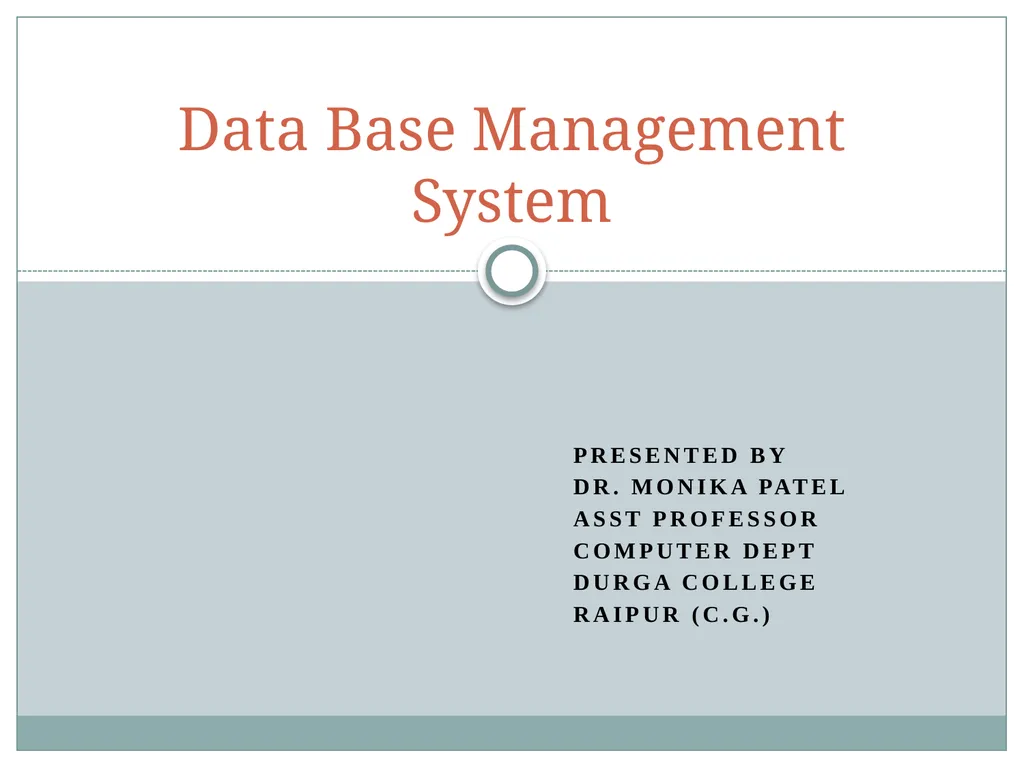Presented by Dr. Monika patel Asst professor
Author : marina-yarberry | Published Date : 2025-05-19
Description: Presented by Dr Monika patel Asst professor Computer dept Durga college Raipur cG Data Base Management System Database Management System DBMS DBMS contains information about a particular enterprise Collection of interrelated data Set
Presentation Embed Code
Download Presentation
Download
Presentation The PPT/PDF document
"Presented by Dr. Monika patel Asst professor" is the property of its rightful owner.
Permission is granted to download and print the materials on this website for personal, non-commercial use only,
and to display it on your personal computer provided you do not modify the materials and that you retain all
copyright notices contained in the materials. By downloading content from our website, you accept the terms of
this agreement.
Transcript:Presented by Dr. Monika patel Asst professor:
Presented by Dr. Monika patel Asst professor Computer dept Durga college Raipur (c.G.) Data Base Management System Database Management System (DBMS) DBMS contains information about a particular enterprise Collection of interrelated data Set of programs to access the data An environment that is both convenient and efficient to use Database Applications: Banking: transactions Airlines: reservations, schedules Universities: registration, grades Sales: customers, products, purchases Online retailers: order tracking, customized recommendations Manufacturing: production, inventory, orders, supply chain Human resources: employee records, salaries, tax deductions Databases can be very large. Databases touch all aspects of our lives University Database Example Application program examples Add new students, instructors, and courses Register students for courses, and generate class rosters Assign grades to students, compute grade point averages (GPA) and generate transcripts In the early days, database applications were built directly on top of file systems Drawbacks of using file systems to store data Data redundancy and inconsistency Multiple file formats, duplication of information in different files Difficulty in accessing data Need to write a new program to carry out each new task Data isolation Multiple files and formats Integrity problems Integrity constraints (e.g., account balance > 0) become “buried” in program code rather than being stated explicitly Hard to add new constraints or change existing ones Drawbacks of using file systems to store data (Cont.) Atomicity of updates Failures may leave database in an inconsistent state with partial updates carried out Example: Transfer of funds from one account to another should either complete or not happen at all Concurrent access by multiple users Concurrent access needed for performance Uncontrolled concurrent accesses can lead to inconsistencies Example: Two people reading a balance (say 100) and updating it by withdrawing money (say 50 each) at the same time Security problems Hard to provide user access to some, but not all, data Database systems offer solutions to all the above problems Levels of Abstraction Physical level: describes how a record (e.g., instructor) is stored. Logical level: describes data stored in database, and the relationships among the data. type instructor = record ID : string; name : string; dept_name : string; salary : integer; end; View level: application programs hide details of data types. Views can also hide information (such as an employee’s salary) for security purposes. View of Data An architecture for a database system Instances and Schemas Similar to types and variables in programming languages Logical Schema














